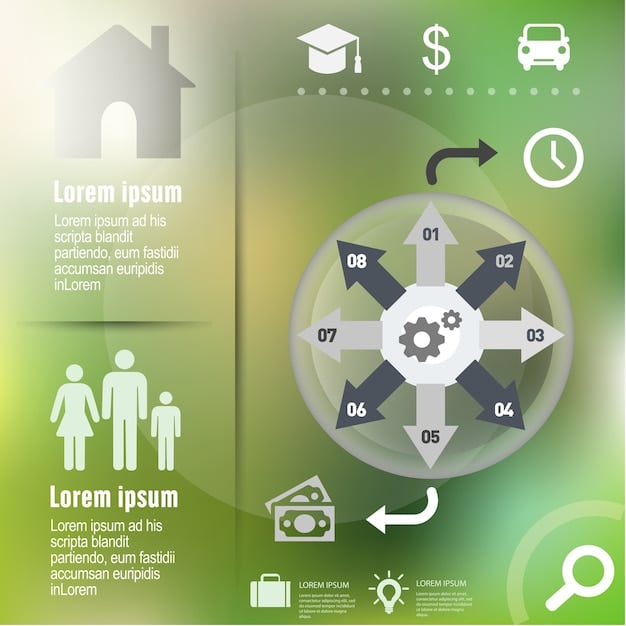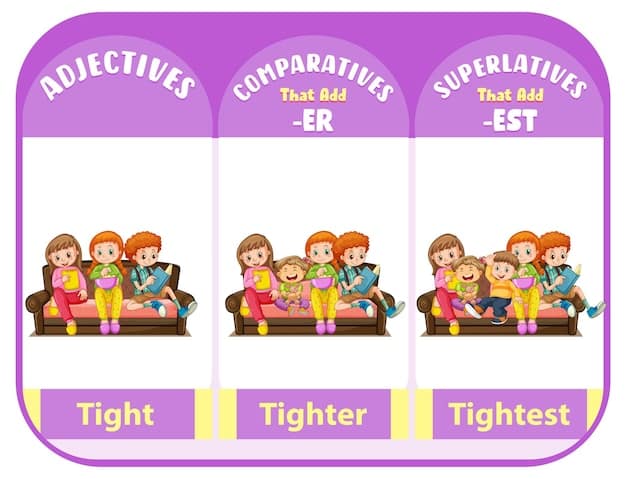How the 2025 FAFSA Update Impacts Your College Aid

The updated 2025 FAFSA aims to simplify the application process and expand eligibility for federal student aid, potentially affecting the amount of financial assistance students receive for college.
Navigating college financial aid can seem daunting, but understanding the changes to the 2025 FAFSA is crucial. But how will the updated 2025 FAFSA impact your college financial aid? This update aims to simplify the application process and broaden access to financial assistance.
Understanding the FAFSA Simplification Act
The FAFSA Simplification Act represents a significant overhaul of the Free Application for Federal Student Aid (FAFSA). This legislative change is designed to streamline the application process and expand access to federal financial aid for students pursuing higher education.
Key Goals of the Act
The FAFSA Simplification Act aims to make the process less complicated and more accessible to families.
Changes to Eligibility Criteria
One of the most important aspects of the updated act is the changes to the eligibility criteria for federal student aid. The new rules aim to provide aid to more students, especially those from low-income backgrounds.

- Simplifying the application questions
- Expanding Pell Grant eligibility
- Modifying the needs analysis to determine aid
The FAFSA Simplification Act is poised to make college more affordable for many students by reducing complexity and expanding eligibility. By understanding these changes, families can be better prepared to navigate the financial aid process.
Major Changes in the 2025 FAFSA Form
The 2025 FAFSA form brings several key changes designed to streamline the application process and improve accuracy. These modifications cover various aspects, from terminology to the data required.
From EFC to SAI
One of the most notable changes is the shift from the Expected Family Contribution (EFC) to the Student Aid Index (SAI). The SAI is designed to provide a clearer picture of a family’s ability to pay for college.
Revised Income Calculations
The income calculations have been revised to better reflect a family’s financial situation. These changes aim to provide a more accurate assessment of a student’s need for financial aid.
These revisions in the 2025 FAFSA form are designed to provide a more accurate and streamlined process for determining financial aid eligibility, ensuring more students have access to the resources they need to pursue higher education.
How the SAI Impacts Your Financial Aid Package
The Student Aid Index (SAI) is a critical component of the updated FAFSA, directly influencing the financial aid package a student receives. Understanding how the SAI is calculated and its impact is crucial for families planning for college.
Understanding the SAI Calculation
The SAI calculation considers various factors, including income, assets, and family size. Unlike the EFC, the SAI can be negative, allowing for a more nuanced assessment of financial need.
Impact on Pell Grant Eligibility
The SAI plays a crucial role in determining eligibility for Pell Grants, which are need-based grants that do not need to be repaid. The lower the SAI, the higher the likelihood of receiving a Pell Grant.

- Lower SAI increases Pell Grant eligibility
- SAI can be negative, reflecting greater need
- Revised income assessment for accuracy
The SAI serves as a critical determinant in shaping a student’s financial aid package, influencing grant eligibility and the overall affordability of higher education. By understanding how the SAI works, families can better anticipate and plan for college costs.
Navigating the New FAFSA Application Process
Applying for financial aid through the updated FAFSA involves several steps, each designed to gather necessary information and determine eligibility. Understanding this process is key to securing financial aid for college.
Step-by-Step Guide to Applying
The FAFSA application process involves creating an account, providing personal and financial information, and submitting the form by the deadline. Accuracy and completeness are essential to avoid delays.
Tips for a Smooth Application
To ensure a smooth application, gather all necessary documents, double-check your information, and submit the form well before the deadline. Seeking assistance from financial aid professionals can also be beneficial.
Navigating the new FAFSA application process requires attention to detail and a proactive approach. By following these steps and tips, students and families can successfully apply for financial aid and make college more accessible.
Common Mistakes to Avoid on the 2025 FAFSA
Completing the FAFSA accurately is crucial for receiving the maximum financial aid possible. Avoiding common mistakes can save time and ensure eligibility.
Incorrect Social Security Numbers
One of the most common errors is providing an incorrect Social Security number. Always double-check this information to ensure accuracy.
Misreporting Income and Assets
Misreporting income and assets can lead to inaccurate financial aid calculations. Provide accurate and up-to-date information to avoid discrepancies.
- Double-check Social Security numbers
- Accurately report income and assets
- Submit the form before the deadline
Avoiding these common mistakes can streamline the FAFSA process and help students receive the financial aid they deserve. Accuracy and attention to detail are key to a successful application.
Preparing for College Costs Beyond Financial Aid
While financial aid can significantly reduce the cost of college, it often does not cover all expenses. Preparing for additional costs is essential for a complete financial plan.
Creating a Budget for College Expenses
Developing a budget that includes tuition, fees, books, and living expenses can help students and families manage college costs effectively. Regularly reviewing and adjusting the budget is crucial.
Exploring Scholarship Opportunities
Scholarships can provide additional financial support that does not need to be repaid. Researching and applying for scholarships can significantly reduce the overall cost of college.
Exploring alternative payment plans, such as installment options, can also make college more affordable. These plans allow families to spread out tuition payments over a longer period.
| Key Point | Brief Description |
|---|---|
| 📝 SAI Impact | The Student Aid Index (SAI) replaces EFC. |
| 💰 Pell Grant | Revised criteria affects Pell Grant eligibility. |
| ✅ Avoiding Mistakes | Accuracy is vital for maximizing aid. |
| 🎓 Beyond Aid | Plan additional expenses beyond financial aid. |
FAQ Section
▼
The Student Aid Index (SAI) is a new metric replacing the Expected Family Contribution (EFC) on the FAFSA form. It’s designed to provide a clearer picture of a family’s ability to contribute to college costs and influences financial aid eligibility.
▼
The 2025 FAFSA includes changes that can expand eligibility for Pell Grants, particularly for students from low-income backgrounds. The updated SAI calculation and expanded criteria aim to provide more students with need-based grant aid.
▼
Common mistakes include incorrect Social Security numbers, misreporting income and assets, and missing deadlines. Double-checking all information and submitting the form early can help avoid these errors.
▼
Beyond tuition and fees, plan for expenses like books, supplies, housing, meals, transportation, and personal expenses. Creating a budget and seeking additional scholarships can help manage these costs.
▼
Assistance is available online through the official FAFSA website, as well as from high school counselors, college financial aid offices, and educational organizations. These resources offer guidance and support throughout the application process.
Conclusion
Understanding the changes to the 2025 FAFSA is essential for securing financial aid and planning for college costs. By familiarizing yourself with the new SAI, avoiding common mistakes, and exploring additional resources, you can navigate the financial aid process with confidence and make higher education more accessible.





